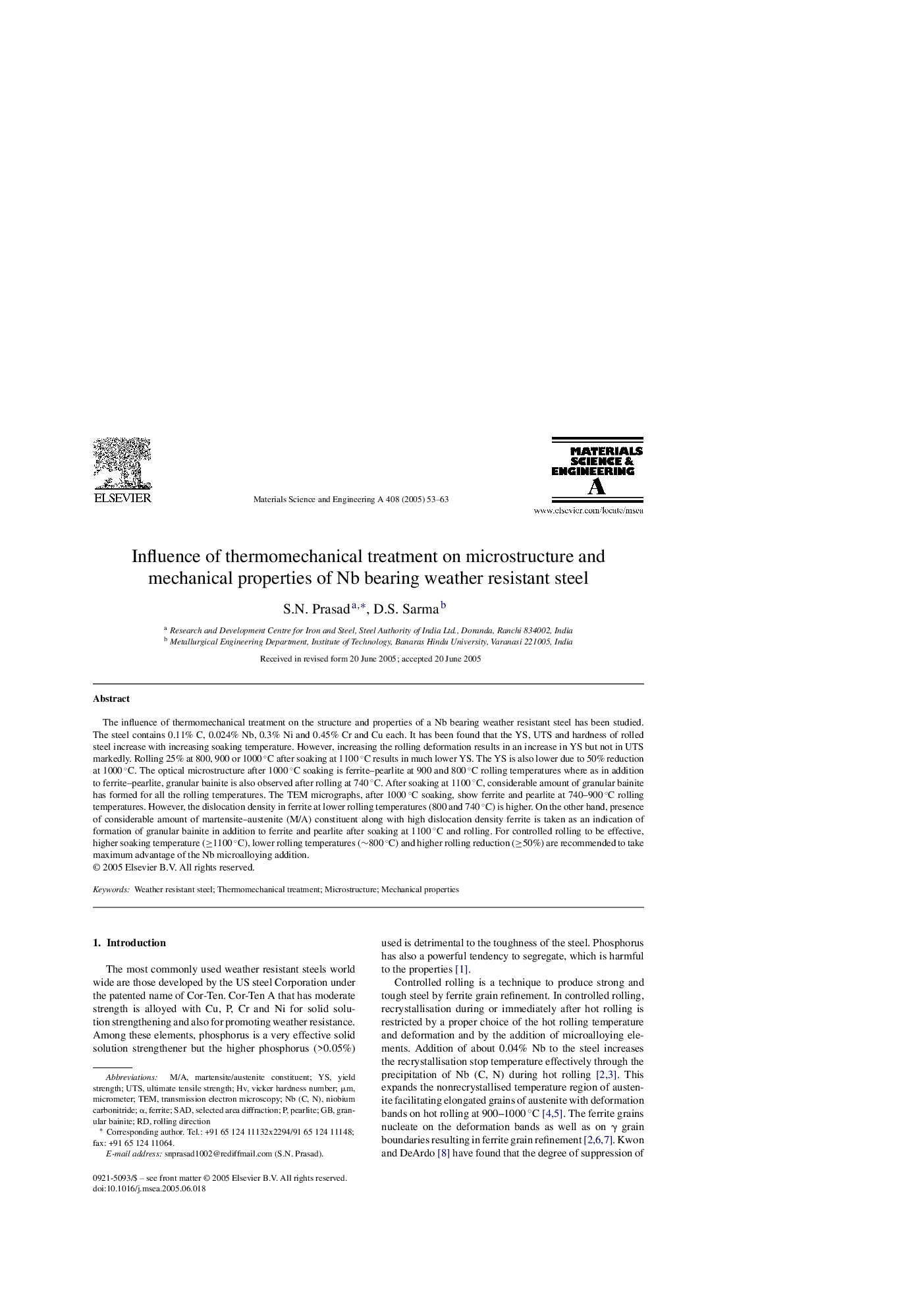| Article ID | Journal | Published Year | Pages | File Type |
|---|---|---|---|---|
| 9795752 | Materials Science and Engineering: A | 2005 | 11 Pages |
Abstract
The influence of thermomechanical treatment on the structure and properties of a Nb bearing weather resistant steel has been studied. The steel contains 0.11% C, 0.024% Nb, 0.3% Ni and 0.45% Cr and Cu each. It has been found that the YS, UTS and hardness of rolled steel increase with increasing soaking temperature. However, increasing the rolling deformation results in an increase in YS but not in UTS markedly. Rolling 25% at 800, 900 or 1000 °C after soaking at 1100 °C results in much lower YS. The YS is also lower due to 50% reduction at 1000 °C. The optical microstructure after 1000 °C soaking is ferrite-pearlite at 900 and 800 °C rolling temperatures where as in addition to ferrite-pearlite, granular bainite is also observed after rolling at 740 °C. After soaking at 1100 °C, considerable amount of granular bainite has formed for all the rolling temperatures. The TEM micrographs, after 1000 °C soaking, show ferrite and pearlite at 740-900 °C rolling temperatures. However, the dislocation density in ferrite at lower rolling temperatures (800 and 740 °C) is higher. On the other hand, presence of considerable amount of martensite-austenite (M/A) constituent along with high dislocation density ferrite is taken as an indication of formation of granular bainite in addition to ferrite and pearlite after soaking at 1100 °C and rolling. For controlled rolling to be effective, higher soaking temperature (â¥1100 °C), lower rolling temperatures (â¼800 °C) and higher rolling reduction (â¥50%) are recommended to take maximum advantage of the Nb microalloying addition.
Keywords
Related Topics
Physical Sciences and Engineering
Materials Science
Materials Science (General)
Authors
S.N. Prasad, D.S. Sarma,
